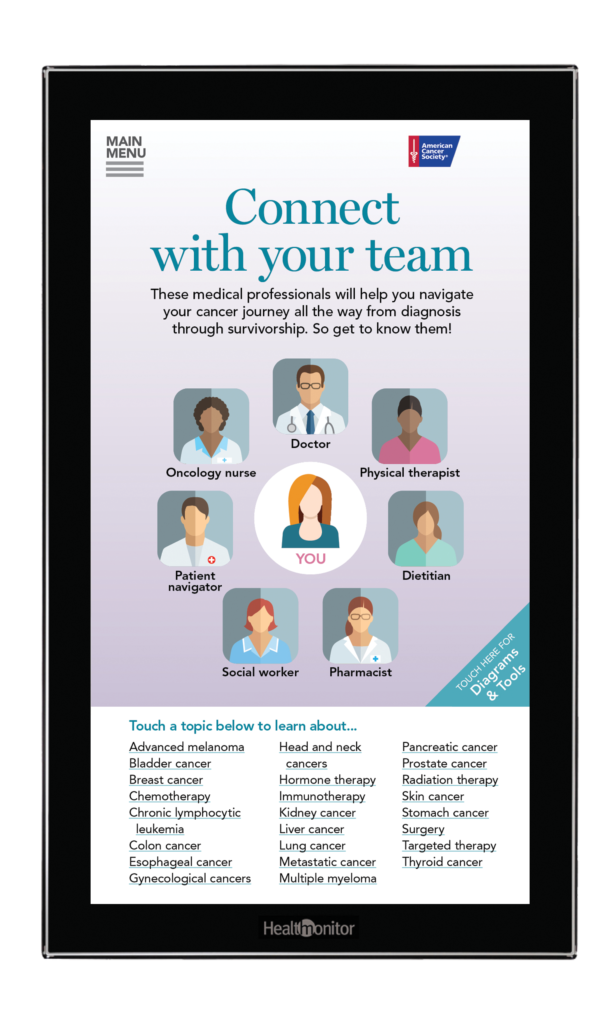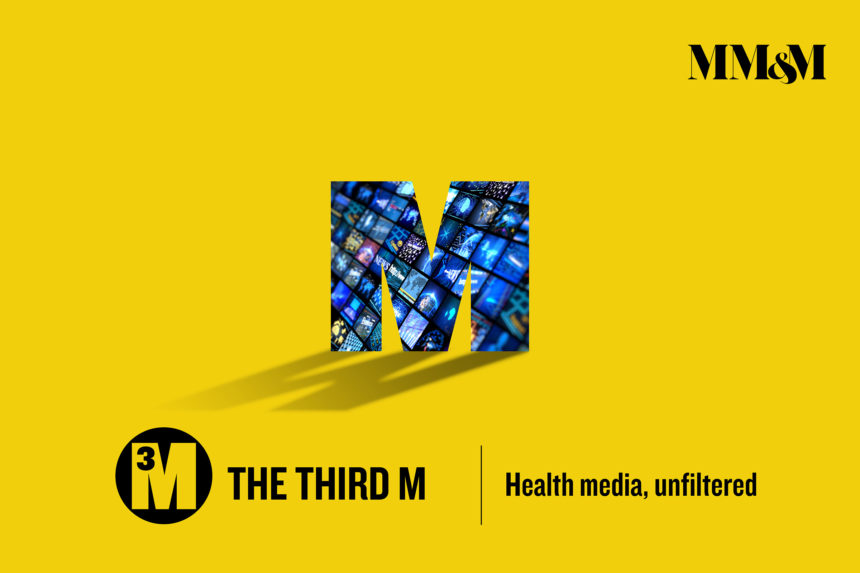Among the preeminent point-of-care content providers, Health Monitor Network is one of the few that has its feet planted in both the digital and print worlds. We checked in with HMN VP, editor-in-chief Maria Lissandrello to get her take on how the company manages to straddle that line.
(This transcript has been condensed and edited for clarity.)
On the company’s digital exam room posters
“The visual aspect right at the immediate point of care makes the information much more tangible. It’s easier for patients to understand and interpret. Patients are really engaging with them, but so are physicians. They rely on the screens for the wealth of tools and diagrams, which facilitate explaining conditions to patients.
“Because the tools and diagrams are easy to access and beautifully rendered, they become an indispensable tool for physicians when they get used to having them in their offices. Doctors can actually write on the digital poster – they can circle the area of the leg where somebody might have deep vein thrombosis. It further personalizes the conversation with the patient. And at the same time, the posters complement our print products.”
On the enduring appeal of point-of-care print
“Our condition guides are still powerful. Patients really rely on them. They have that takeaway appeal: patients can take them home, share them with their families, turn to them as resources.”
On HMN’s shift from broadly focused magazines to condition-specific guides
“This is my tenth year here and when I got here we used to publish a lot of bimonthly magazines. That has shifted to the point where they’re pretty much gone and instead we’re focusing on single-condition patient guides. It’s partly because clients are finding they’re more targeted and effective. They don’t want to share space with other clients [from other condition areas].
“The guides are a much more focused product and the ROI that clients are experiencing with them is pretty significant. Marketers are very pleased with the results they’re seeing here, versus being part of a broader product.”

On the key to modulating appeals to its audiences
“We try to take a very personal approach. One of the main ways we do that is by featuring real people with the condition we’re discussing. It’s kind of a feat to find people who are willing to open up about certain conditions, not all of which are sexy to go public with or discuss. It helps other people overcome any shame or embarrassment they may have.
“Readers write us directly asking for more information – maybe about a particular treatment one of our patients has discussed: ‘Oh, what was that?’ The strategy is to be humanistic and compassionate, especially when compared to some other products that come across as informational, yeah, but maybe impersonal. You can go to the Mayo Clinic site or WebMD and get basic condition information, but we really bring it to life.”
On putting the “humanistic and compassionate” approach into practice
“One condition that’s newer for us is PBA – pseudobulbar affect, which is episodes of exaggerated laughter or crying. It usually happens as a result of a larger neurological condition, like a stroke or MS or traumatic brain injury. It’s embarrassing, it’s public and it causes people to want to withdraw, and until recently there was no treatment. If you have MS or ALS, which is already difficult, and then you add this on top of it – it’s depressing. It’s debilitating.
“Now that there’s a treatment that’s effective, we’ve highlighted many stories of people with PBA who were isolated or depressed. Now they’re back out in public; some of them are back at work. We feel like we’re doing a service for readers, getting information out there that should be out there.”
On how content specifically tailored to the point-of-care environment can compete with smart phones
“Our guides are specific. If I’m in the doctor’s office and I happen to have Parkinson’s disease, and there’s a guide sitting on a table or in the rack – and it’s identified as Parkinson’s disease and there’s a vibrant person on the cover – there’s no way I’m not picking it up.
“You’re basically spoon-feeding information to the reader. They may want to research something on their smart phone, but it’s something we’re dangling. It’s low-hanging fruit for the patient. There’s no way they’re not going to want to pick it up.”
On the continued importance of allying with experts
“We always want to have medical reviewers for our products. The KOLs we work with come from Harvard and Johns Hopkins and the Cleveland Clinic, and they’ll work with us over and over again. In many instances, they’re the people who are working on guidelines and on clinical trials. They’re not just neighborhood doctors; they’re very high-caliber.”
On what’s next, for Health Monitor Network and the POC space
“We want to keep fine-tuning the technology and we want to keep doing cooler stuff that brings value to the doctor/patient interaction, so that our products are a must-have. I honestly don’t know what the limits might be.”







